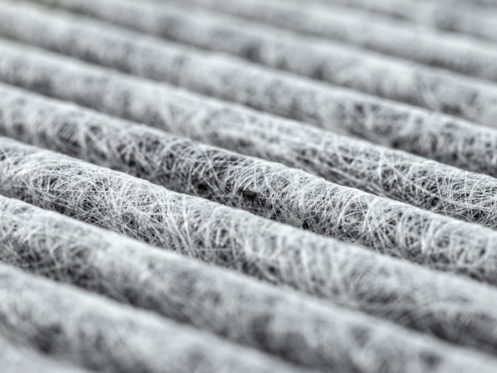Dirty air filters are one of the leading causes of breakdowns. However attaching HVAC filter types with the wrong size or MERV rating can be equally as damaging to your system. Picking out the right filter type can be a daunting task with the health of your HVAC system at stake. So here’s a breakdown of common filter variables.
MERV Rating
Starting with the Minimum Efficiency Reporting Values – the MERV rating. Essentially it’s a rating system for the filter’s ability to stop airborne particles from passing through. The higher the rating, the tighter the filter’s mesh material becomes. The tighter mesh allows smaller air particles to become trapped while letting the air pass through the system.
This doesn’t mean filters with a higher MERV rating are always better though! HVAC filters that have a MERV rating than 13 are not recommended for residential systems. While the tighter mesh blocks more particles, it also reduces the airflow which causes your system to use more energy to compensate. Generally, MERV ratings 5-10 are recommended for most household systems. The filter that best suits your needs depends on your surroundings. Households with pets, allergies, or smokers often find higher rated filters are beneficial to their needs. Keep in mind, filters become dirty faster with higher MERV ratings as they are capable of blocking more airborne particles.
HVAC Filter Types
- Fiberglass Air Filters (MERV 1-4 rating)
The least expensive types are fiberglass air filters. These filters allow for greater airflow due to their wider mesh composition. While it’s less stress on the system, it also lets a larger portion of particles to recirculate through the air. Which means there will be little to no benefits to allergy sufferers. In addition, fiberglass air filters often need to be replaced more frequently
- Pleated Air Filters (MERV 5-8 rating)
The most common variety of filters are called pleated air filters. They are a bit more pricey in exchange for more protection against smaller particles. Due to a larger surface area, they provide better filtering to trap particles like pollen, mold spores, and pet dander. Furthermore, pleated filters don’t need to be replaced as often so it helps homeowners save money in the long run.
- Hepa Air Filters
These filters use static electricity and friction to help trap more airborne particles from passing through. Due to this unique feature and material, the price rises considerably. Additionally, while they have the ability to trap most air pollutants, they also strain the system. The drastically reduced airflow causes the system to work harder and expend more energy to operate at normal capacity.
Washable vs Disposable Air Filters
When choosing the right HVAC filter, there’s even choices of disposable or reusable to consider. A reusable HVAC filter (which typically has plastic or metal frames)
- uses a filter media that is washable.
- typically last about five years
- has less waste/effect on the environment
- has a higher initial cost
- needs more maintenance (the time it takes to wash)
- generally has a lower MERV rating and inability to trap smaller particles
On the other hand, disposable filters (which typically has cardboard frames)
- are easier to switch out and replace (less maintenance)
- generally has a higher MERV rating and better ability to trap smaller particles
- has a lower initial cost but creates a recurring cost
- needs to be switch out every three months or less
- creates more waste and are not biodegradable
Your Local HVAC Professionals
We know filters and HVAC systems can get confusing, if you have any questions contact us at Satterlee today! Our professional technicians are more than happy to help guide you to find what best fits your needs.


